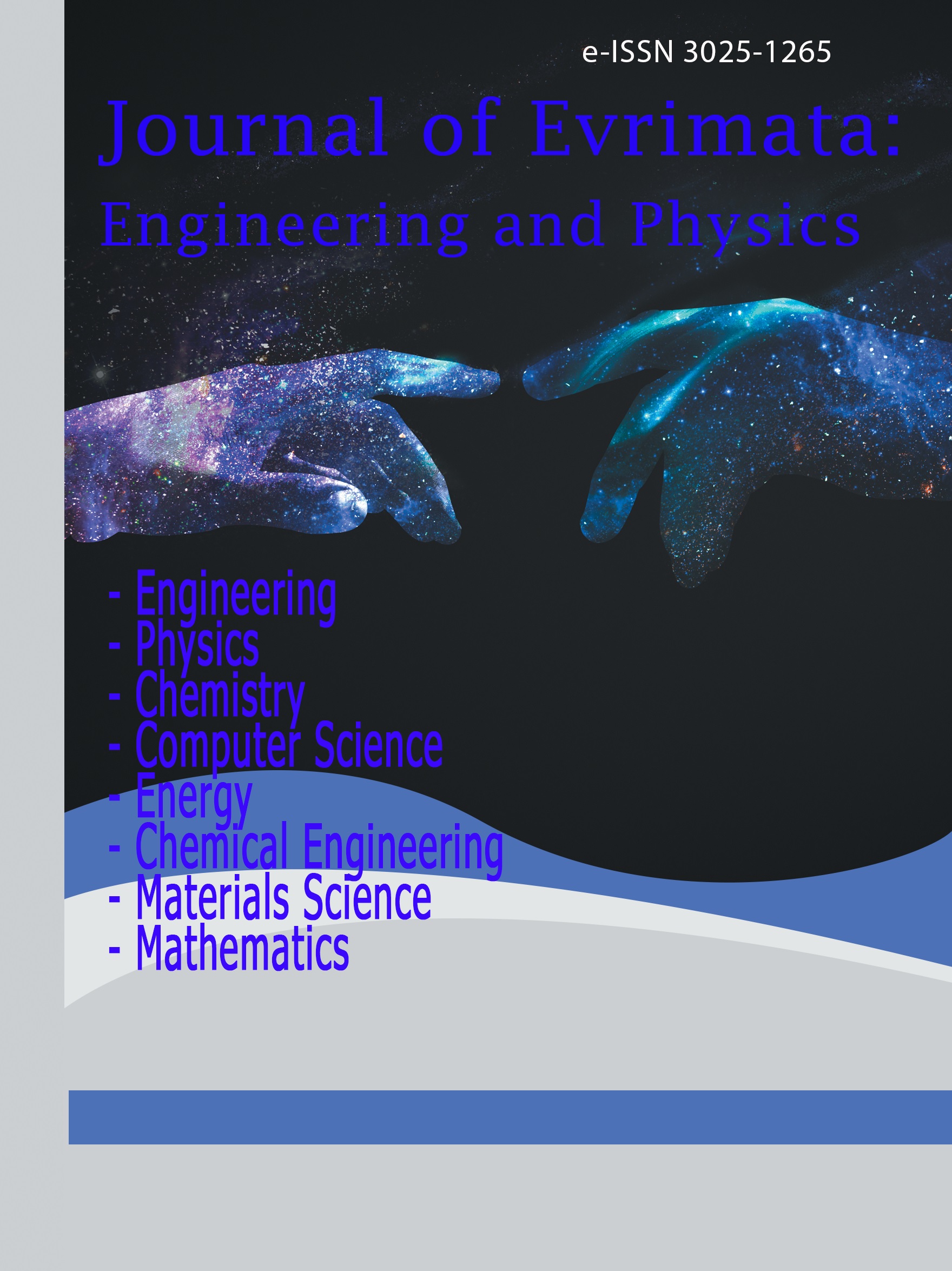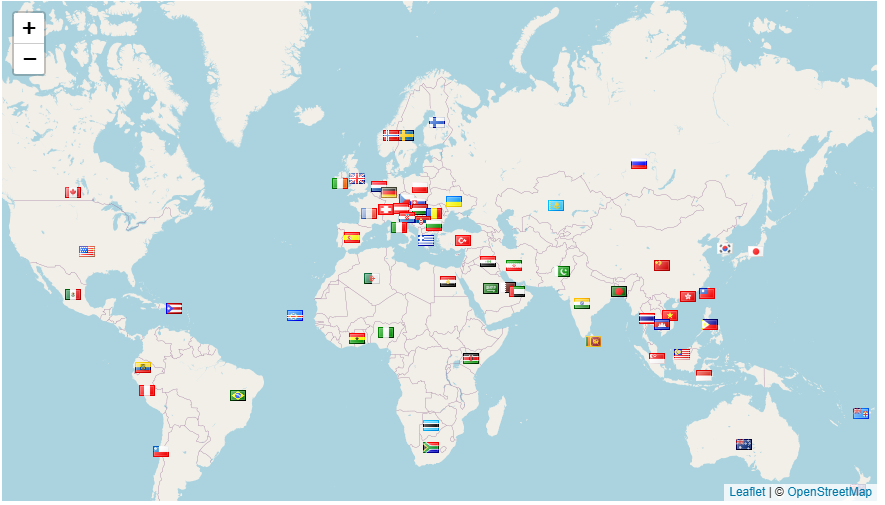THE Effect of Brake Padding Strikes and Reversing Spring Pressure on Acceleration of Drum Brakes
DOI:
https://doi.org/10.70822/journalofevrmata.vi.19Abstract
Car performance is getting better and better over time. This is thanks to developments in engineering technology. Starting from conventional systems to VVTI technology. What you get is great power with very economical fuel consumption (high efficiency). Even more important is good exhaust emissions. All of this is simply managed by a tool called the ECU (Electronic Computerized Unit).
However, this large power output cannot be used properly by a vehicle if it is not equipped with a good chassis system and power scanning system. For this reason, this research will look for/obtain a good chassis system that can match the good engine system to date. The objectives of this research are 1. Is there a big influence of the tensile force of the return lining spring and the stroke of the brake lining on speed acceleration. 2. Look for the right pulling force of the cotton turning spring and the right lining strokes to produce high speed acceleration. The method used in this research is experimental. Meanwhile, the material used is a type of brake lining that is available on the market and is marked with strokes. The reversing spring is set to the desired tensile force. And the research data will be processed using Minitab software.
The research results show that: . 1. Scratches on the surface of the brake lining have a big influence on the release of the brake lining from the brake drum wall. By periodically applying strokes to the surface of the canvas, it will increase/maintain vehicle acceleration. 2. The pressure of the brake lining return spring affects the release of the drum brake lining. However, the greater the spring pressure, the more the vehicle's acceleration decreases. 3. Maximum scratches on the drum brake lining surface are 1 (mm).
Keywords: Drum Brakes, Spring Style, Drum Brake Pads, Speed Acceleration,
References
S. Nallusamy, S. R. Seenuvasa, S. Sundar, and G. Majumdar, “Study on enhancement of quality level through a lean approach in an original equipment manufacturer,” Int. J. Eng. Res. Africa, vol. 43, 2019, doi: 10.4028/www.scientific.net/JERA.43.145.
S. Vasiljević, B. Aleksandrović, J. Glišović, and M. Maslać, “Regenerative braking on electric vehicles: working principles and benefits of application,” IOP Conf. Ser. Mater. Sci. Eng., vol. 1271, no. 1, 2022, doi: 10.1088/1757-899x/1271/1/012025.
X. Wang, Z. Fan, and L. Gui, “Implementation of an arbitrary Lagrangian–Eulerian method to optimise the shapes of contact surfaces,” Proc. Inst. Mech. Eng. Part C J. Mech. Eng. Sci., vol. 235, no. 17, 2021, doi: 10.1177/0954406220962819.
“Design and Analysis of the Braking System to Improve Heat Dissipation by Utilizing the Multi-Material Concept,” Environ. Sci. Eng., vol. 2, no. 2, 2023, doi: 10.46632/ese/2/2/11.
“Design and Analysis of the Braking System to Improve Heat Dissipation by Utilizing the Multi-Material Concept,” Environ. Sci. Eng., vol. 2, no. 2, 2023, doi: 10.46632/ese/2/2/011.
Z. Zhang, N. Sun, Y. Chen, and M. Ahmadian, “Detailed Modeling of Pneumatic Braking in Long Combination Vehicles,” SAE Int. J. Commer. Veh., vol. 14, no. 3, 2021, doi: 10.4271/02-14-03-0020.
V. M. Ampadu, A. Alrejjal, and K. Ksaibati, “Performance and cost-effectiveness of air disc brakes and air drum brakes for truck semi-trailers in different road and speed conditions,” J. Sustain. Dev. Transp. Logist., vol. 8, no. 1, 2023, doi: 10.14254/jsdtl.2023.8-1.2.
D. S. Shinde, K. N. Mistry, and M. Bulsara, “Theoretical and experimental investigation of non-asbestos friction lining material applied in automotive drum brake,” Proc. Inst. Mech. Eng. Part J J. Eng. Tribol., vol. 234, no. 6, 2020, doi: 10.1177/1350650119877775.
C. A. P. Travaglia, J. A. de Castro, L. C. R. Lopes, and C. da Silva Terra, “An Investigation of the Parameters for Characterization and Prediction of Wear of Drum Brake Friction Material,” J. Mater. Eng. Perform., vol. 31, no. 7, 2022, doi: 10.1007/s11665-022-06672-0.
H. Qin, A. Song, and Y. Mo, “Evaluation of a multi-drum magnetorheological brake via finite element analysis considering number of drums and fluid gap selection in optimization,” J. Intell. Mater. Syst. Struct., vol. 30, no. 5, 2019, doi: 10.1177/1045389X19828517.
L. Storch et al., “Comprehensive Analysis of Current Primary Measures to Mitigate Brake Wear Particle Emissions from Light-Duty Vehicles,” Atmosphere (Basel)., vol. 14, no. 4, 2023, doi: 10.3390/atmos14040712.
K. Taksande, P. Maske, and A. Chel, “DESIGN AND DEVELOPMENT OF BRAKE PEDAL AND DRUM FOR MULTIUTILITY FARM VEHICLE,” Int. Res. J. Eng. Technol., 2020.
H. Qin, A. Song, and Y. Mo, “Performance Evaluation of a Hollowed Multi-Drum Magnetorheological Brake Based on Finite Element Analysis Considering Hollow Casing Radius,” IEEE Access, vol. 7, 2019, doi: 10.1109/ACCESS.2019.2930301.
R. A. Novianto and G. Achmaditiya, “Impact of Adjusting Brake Lining Gap and Brake Drum Temperature on Brake Efficiency of Motor Vehicles,” RSF Conf. Ser. Eng. Technol., vol. 2, no. 2, 2022, doi: 10.31098/cset.v2i2.579.
U. Komarudin, A. Prasetya, and N. N. Suryaman, “Construction Effectiveness Of Vehicle Drum Brakes,” Rev. Int. Geogr. Educ. Online, vol. 11, no. 6, 2021, doi: 10.48047/rigeo.11.06.53.
J. Bian, X. Wang, L. Gui, and Z. Fan, “Experiments and simulations of bimetal drum brakes at high temperature conditions,” J. Automot. Saf. Energy, vol. 12, no. 2, 2021, doi: 10.3969/j.issn.1674-8484.2021.02.004.
W. Wang et al., “Optimization Design of Drum Brake Stability with Mixed Model of Random and Interval Variables,” J. Vib. Eng. Technol., vol. 11, no. 8, 2023, doi: 10.1007/s42417-022-00777-5.
L. Guckes, J. Hoffmann, M. Schrimpf, and H. Winner, “‘Evaluation of an electromagnetically actuated drum brake concept,’” Automot. Engine Technol., vol. 8, no. 2, 2023, doi: 10.1007/s41104-023-00130-2.
W. Wang, J. Li, G. Liu, J. Wei, Z. Zhang, and M. Cheng, “Optimization design of drum brake stability based on Kriging surrogate model,” Zhendong yu Chongji/Journal Vib. Shock, vol. 40, no. 11, 2021, doi: 10.13465/j.cnki.jvs.2021.11.019.
Z. Yang, U. Pak, Y. Yan, and C. Kwon, “Reliability-Based Robust Optimization Design for vehicle drum brake considering multiple failure modes,” Struct. Multidiscip. Optim., vol. 65, no. 9, 2022, doi: 10.1007/s00158-022-03349-z.
A. L. Dias, R. do Nascimento Rodrigues, R. de Araújo Bezerra, and P. Lamary, “Heavy Duty Automotive Drum Brake Squeal Analysis Using the Finite Element Method,” J. Vib. Eng. Technol., vol. 9, no. 8, 2021, doi: 10.1007/s42417-021-00346-2.
Z. Yang, U. Pak, C. Kwon, and Y. Zhang, “A reliability-based robust optimization design for the drum brake using adaptive Kriging surrogate model,” Qual. Reliab. Eng. Int., vol. 39, no. 1, 2023, doi: 10.1002/qre.3230.
V. M. Ampadu, M. T. Haq, and K. Ksaibati, “Comparing Grade Severity Rating System Models for Trucks Fitted with Drum Brakes versus Disc Brakes,” SAE Int. J. Transp. Saf., vol. 11, no. 1, 2022, doi: 10.4271/09-11-01-0005.
A. L. Dias, R. d. N. Rodrigues, R. d. A. Bezerra, and P. Lamary, “Automotive simplex and duplex drum brake squeal analysis using the finite element method,” Noise Vib. Worldw., vol. 53, no. 1–2, 2022, doi: 10.1177/09574565211052692.
X. Wang, Z. Fan, J. Bian, and L. Gui, “Drum brake fatigue life predictions,” Qinghua Daxue Xuebao/Journal Tsinghua Univ., vol. 61, no. 1, 2021, doi: 10.16511/j.cnki.qhdxxb.2020.21.007.
N. N. Gorbatenko, “Output Parameters of a Drum Brake with Floating Shoes,” Russ. Eng. Res., vol. 43, no. 6, 2023, doi: 10.3103/S1068798X23060102.
D. Yu, T. Zhou, H. Zhou, Y. Xu, P. Zhang, and Y. Yan, “Effects of angle formation between melted zone and friction direction on thermal fatigue and wear resistance of truck drum brake,” Proc. Inst. Mech. Eng. Part D J. Automob. Eng., vol. 235, no. 5, 2021, doi: 10.1177/0954407020966868.
D. S. Antunes, D. Masotti, N. F. Ferreira, P. D. Neis, L. F. F. Miguel, and J. Favero, “Damping effect on nonlinear drum brake squeal prediction,” J. Brazilian Soc. Mech. Sci. Eng., vol. 44, no. 3, 2022, doi: 10.1007/s40430-022-03398-x.
A. Yella, A. Chaudhary, and S. Sundar, “Development and comparative evaluation of various fault detection algorithms for a drum brake using artificial neural networks and a physics-based model,” Eng. Appl. Artif. Intell., vol. 124, 2023, doi: 10.1016/j.engappai.2023.106565.
D. Shinde, M. Bulsara, and J. Patil, “Wear analysis of eco-friendly non-asbestos friction-lining material applied in an automotive drum brake: Experimental and finite-element analysis,” Proc. Inst. Mech. Eng. Part J J. Eng. Tribol., vol. 236, no. 3, 2022, doi: 10.1177/13506501211016730.
D. Schmid, N. Gräbner, and U. von Wagner, “Friction-induced noise in drum brakes: finite-element modeling and experiments with special focus on damping,” Arch. Appl. Mech., vol. 92, no. 8, 2022, doi: 10.1007/s00419-022-02189-z.
R. Lapisa et al., “EXPERIMENTAL STUDY OF THE EFFECT OF BRAKE DRUM COOLING GROOVES ON MOTORCYCLE BRAKING PERFORMANCE,” EUREKA, Phys. Eng., vol. 2022, no. 3, 2022, doi: 10.21303/2461-4262.2022.001983.
Downloads
Published
Issue
Section
License
Copyright (c) 2024 listiyono listiyono, nurhadi nurhadi, Hazlina Md Yusof

This work is licensed under a Creative Commons Attribution 4.0 International License.







